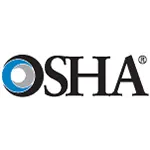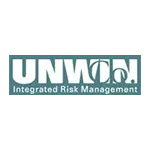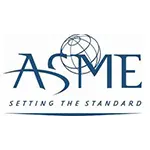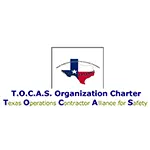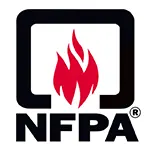Let us help you make sense of PSM / RMP!
My friend Brian Chapin will be offering an open-enrollment PSM/RMP class in Burleson, Texas, July 8th to 11th, 2025. Brian is an absolute pro in NH3 Refrigeration Process Safety. Anyone who attends will also get a FREE membership to SAFTENG. You can get more information on the class with this link.
CLICK HERE to Renew your Membership
CLICK HERE for a NEW Membership
CLICK HERE to see eligibility requirements for FREE Membership
If you have any questions, please contact m
SAFTENG has:
- Over 18,000 categorized unsafe acts/conditions and accident/injury photos
- Over 1,500 ppt's & doc's in the SAFTENG Library
- Over 4,000 Technical Articles on Process Safety, Emergency Response & OSH topics
- Over 450 videos (those not allowed on YouTube Channel)
Many THANKS to my NEW Members and those who CONTINUE to support SAFTENG:









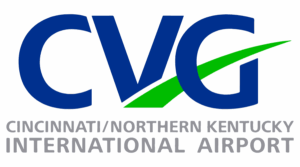




May 20, 2025
Respondent is the owner and/or operator of the Facility, which operates a chemical storage and distribution facility. The respondent had on-site storage for 50,000 pounds of cyclohexylamine, 1,800,000 pounds of chlorine, 1,500,000 pounds of sulfur dioxide (anhydrous), 265,000 pounds of ammonia (anhydrous), 350,000 pounds of ammonia (concentration 20% or greater), and 17,000 pounds of hydrofluoric acid....
Read More
May 20, 2025
The PSM standard requires the employer’s PHA team to evaluate human factors during its process hazard analysis. CCPS defines human factors as “a common term given to the widely-recognized discipline of addressing interactions in the work environment between people, a facility, and its management systems.” The basic principle of assessing human factors is to determine whether the employer “fits the...
Read More
May 20, 2025
The Management of Change (MOC) section of the PSM standard requires the employer to implement written procedures for managing changes (except for replacements in kind) to processes involving chemicals, technology, equipment, procedures, and changes to facilities that affect a covered process. The MOC procedure requires descriptions of the technical basis for the change, impact on safety and health,...
Read More
May 19, 2025
OSHA has identified the following mistakes found at PSM facilities nationwide. These mistakes were identified at refineries; however, almost all can be found within any PSM-covered process. I have revised OSHA’s wording so that we can ALL learn from these mistakes. PLEASE do not fall for the old trap of “Bryan, we are not a refinery.” We all have to meet 1910.119, and in fact, MOST...
Read More
May 19, 2025
Employers can use the Safety Pays Individual Injury Estimator to assess the impact of occupational injuries and illnesses on their profitability. This program uses a company’s profit margin, the average costs of an injury or illness, and an indirect cost multiplier to project the amount of sales a company would need to generate to cover those costs. The program is intended as a tool to raise...
Read More
May 19, 2025
The following NFPA and ANSI standards, in whole or in part, are to be incorporated by reference into proposed rule 1910.156, per 29 CFR 1910.6. See 29 CFR 1910.6(a)(1). Provisions in the proposed standard are drawn from, or consistent with, the following NFPA standards, but these standards are not proposed to be incorporated by reference:
…
HomeRead More »
Read More
May 17, 2025
This unfortunate event is the result of the same failure seen in nearly every industrial facility on the planet… a guarding interlock gets bypassed, and a worker pays an unimaginable price for the failure. Sometimes it’s the worker(s) who bypass the interlock, and other times they are the unknowing victim of the bypass. Here is an event from “down under” that we can ALL LEARN...
Read More
May 16, 2025
I usually do not waste time posting the Expedited Settlement Agreements, as these cases are typically minor record-keeping violations with low-dollar amount citations. However, one thing that irks me is how public utilities receive lenient treatment regarding the amount they pay for violating the EPA’s RMP regulations. And to make matters worse, they dare to state that this is in the public interest....
Read More
May 15, 2025
Respondent is the owner and/or operator of a facility that operates an ammonia refrigeration plant with 39,000 pounds of anhydrous ammonia. Respondent has one RMProgram level 3 covered process, which stores or otherwise uses anhydrous ammonia in an amount exceeding its applicable threshold of 10,000 pounds. On July 18, 2023, the EPA conducted an on-site inspection of the RMProgram related records and...
Read More
May 15, 2025
The question was asked of OSHA…
Whether the use of paraffin wax as a form of topical heat application is considered medical treatment beyond first aid for OSHA recordkeeping purposes?
…
HomeRead More »
Read More
May 12, 2025
Respondent operated a facility that refines petroleum products using a hydrofluoric acid alkylation process. Hydrofluoric Acid is a “regulated toxic substance” listed under CAA Section 112(r)(3), 42 U.S.C. § 7412(r)(3), with a TQ of 1,000 lbs. See 40 C.F.R. § 68.130, Tables 1 and 2. On June 2-3, 2022, EPA performed an inspection of the Facility to evaluate compliance with the Comprehensive Environmental...
Read More
May 11, 2025
Think of the safety journey as one of the vast improvements. When we first started managing safety, we did it by making and enforcing rules about safety and we got better, much better. Then we started to level out, we plateaued in our performance and needed to do something different. Safety got better and then it stopped improving. We were better but not excellent. And, we did not solve all of the...
Read More



